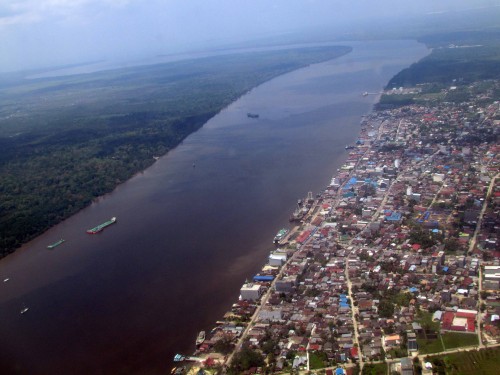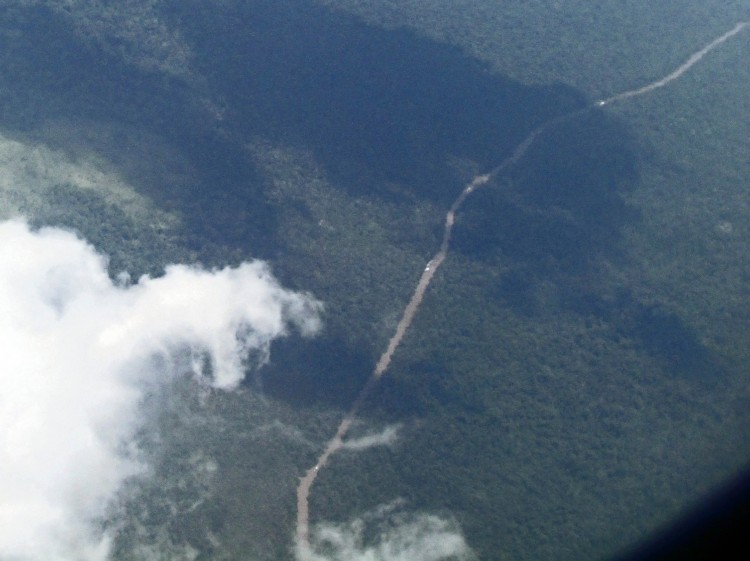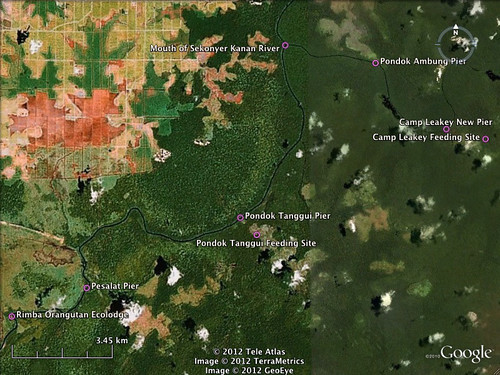Site & Object
Tanjung Puting National Park
Indonesia is the thirth most biologically diverse country in the world,after brazil and zaire. Borneo is a world megabiodiversity hotspot, coming second after amazone.Indonesia cover 1.3% of the the world land area but its first contain 10% of the world plants,12% of mammalia,17% of reptile and amphibian 17% of bird species.Tanjung Puting National Park is one of the richest park in indonesia,with may rare and endangered species.

Tanjung puting national park is located in central kalimantan indonesia. It is one of conservation area in indonesia and the first orangutan rehabilitation site in Kalimantan.Where you can see the orangutan;one of the species of the great apes in the world and it has more than 600 type of tree,200 varities of orchid,almost 230 species of bird 38 species of mammal,9 species of primate and still many other life forms share and living together in their natural habitat. With an area 415.040 hectare Tanjung puting national park has some small river systems and has several ecosystem types ,namely lowland tropical forest,dry land forest,freshwater swamp forest,peat swamp forest,mangroves forest,coastal forests and secondary forests.these appear to have been important in determining the distribution of some fish and other species by acting as natural barries to their spread.And tanjung puting national park has been designated as a nature as well as flora and fauna conservation center,especially for bornean orangutan. As a conservation area for unique flora and fauna and their ecosystem,tanjung puting national park possesses various points of interest for tourist to see and now,is continued to be developed as a dynamic tourism spot and as the main ecotourism destination for borneo.
Flora
The main species of flora in the northern region are kerangas forest and insect eating planta such as kantong semar( Nephentes sp). True peat swamp forest are found in the central part of the area and near the bank of some rivers, and there are plants wwith knee roots and air roots.
All along the bank of all rivers in this are there is true fresh water swamp forest (alluvial, with a complex of species of wooded creeping plants of large and small sizes, epiphyte and creeping ferns in large amount.

In the northern region towards the south of the area there is a plain with species of wide shrubs, resulting from damaged kerangas forest due to cutting and burning. These are generally found within pockets all along the Sekonyer River and the streams. The plant in the upper reaches of the main river comprise of grassy swamp dominated by pandanus sp and spread macrophyte (wild lily) floating, such as Crinum sp at coastal areas including mangrove forest. Further into the dry land in the the brackish area at the estuaries along the river, and indicate the content of brackish water’s intrusion into the dry land. The coastal areas on the beaches have sand with lots of plants of the genera of Casuarina, Pandanus,Podocarpus, Scaevola, and barringtonia.
Other species of plant to be found in the Tanjung Puting National Park are meranti (Shorea sp), ramin (Gonystylus Bancanus, jelutung (Dyera costulata), eaglewood, lanan wood, keruing( Dipterocarpus sp), ulin (Eusyderoxylon zwagery), tengkawang(Dracomentelas sp0, Dacrydium, Lithocarpus, Castonopsis, Schiima, Hapea, Melaleuca, Dyospyros, Beckia,Jackia, Licuala, Vatica, Palaquium,Astonia, Nipa palm, Crinatum,Pandanus etc. Plants at the lower forest layer comprise the species of rattan and tree rejuvenation/young plants.
Fauna

Tanjung Puting National Park is occupied by around 38 species of mammal. Seven of these include familiar and protected primates such us orangutan (pongo pygmaues), proboscis monkey(nasalis larvatus), gibbon(hylobates agillis) and honey bear(helarctos malayanus) large species of mammal such as barking deer (munaniacus muntjak), mouse deer(tragulus javanicus) and wild boar(sus barbatus) can be ound in this area. Even some species of water mammal such as dugong(dugong dugong) and dolphin have been reported from the waters around tanjung puting national park area.
Camp Leakey

The first research center was camp leakey,it was established in 1971 by Prof. Birute Galdikas,Rod Brindamour and Indonesia Official Ministry of Forestry.Here was that Prof. Birute Galdikas started her long term research about wild orangutan and reintroduced excaptive orangutan to their natural habitat and is supported by leakey foundation.The research she was undertaking were on the frontpage of national geographic in 1975.Prof. Birute Galdikas is now considered to be one of the world leading experts on orangutan behavior.And she continues with her foundation to manage,research the orangutan at the different camps untill this day.
Kumai
Kumai is a port city in Province of Central Kalimantan in Indonesia, on the island of Borneo.Administratively, Kumai is a kecamatan (district) of West Kotawaringin Regency.

Kumai was once part of the Kutaringin Monarchy. It was originally led by Pangeran Bendahara, who later gave Kumai to Muhammad Cik, Kumai’s village leader. Cik then gave his position to Amsar, who was chosen to be regent of Kumai.
Tirik is a form of poetry popular in the Kumai Hulu District.
Music and dance is central to the culture of the Kumai District. Hadrah is a form of Islamic music that uses rebana. Japin is a traditional dance of the Melayu people that is still performed in the district of Candi.
Several annual festivals dot the local calendar as well. The Bebersih Benua (literally “cleaning continent”) is held every year by local fishermen. Other traditional ceremonies – such as weddings, cicumcisions, etc. – are usually held in Kumai.
The Sekonyer River

Sekonyer River is the gateway into Tanjung Puting National Park, as you make your way through the black water on either side of your boat you will see the Nypa palm and Mangroves. As you venture further upstream you will also encounter many types of forest vegetation which is home for variety of wildlife including estuarine crocodile,crab,eagle,heron,storm stock,kingfisher,and various river fish. The Sekonyer River has a distinctive and unique character and the wildlife seen along the river’s edge will leave you spellbound,but your adventure has only just begun.
Tanjung Harapan

This area is the site for one of Orangutan Rehabilitation Centres where you may be able to view these rare primates that have been re-introduce into their natural habitat.At 15:00 local time you can witness the Orangutans at the feeding station. To enhance your visit this station has excellent facilities including a guest house,information centre and tracking trail for those of you who wish to explore the borneo jungle. You may also be interested to see and learn about the wild variety of orchids that grow on region Tanjung Puting National Park.
Pesalat
This is an area of forest regeneration by planting tress,you will also learn how herbs are used in the traditional way to cure diseases as an alternative to modern medicines.Pesalat also has many good locations for birdwatching and you may also camp out in the wilderness letting the peaceful atmosphere of the night and the sounds of the nocturnal wildlife send you off to sleep.on where you will be directly involved in helping to preserve the forest.
Pondok Tanggui
This is an attractive station and popular with tourists. Here at 09:00 local time you can watch the orang-utans feeding. There are many interesting things to see along the trail to leading up to this feeding station.
Pondok Ambung
The focus on research activities at Pondok Ambung makes this an excellent place for students and visitors alike. Some research trails can be utilised for you to take a night trek into the jungle. Animal often seen at this station include mouse deer,porcupine,wildboar,sleeping birds and variety of nocturnal species.
Danau Nurisam
Danau Nurisam is a season lake located in-between pondok Ambung and Camp Leakey, for those you who choose to spend your holiday afloat. You will have a magical view everynight (weather permitting of course) of the moon,stars and especially the milky way.
Tanjung Keluang

Tanjung Keluang is a cape located in kumai bay near the Java sea. This is where the endangered Green Turtles live and breed. There is a non-profit organisation which monitors the welfare and release of the turtles and observes the great bio-diversity of the area.
Quiet waves,white sands and beautiful sunsets make this cape a very special place to visit.

 WhatsApp us
WhatsApp us